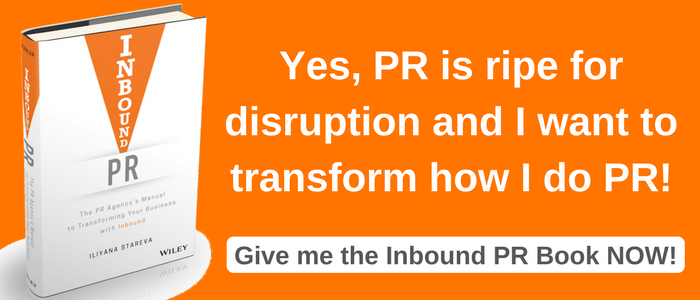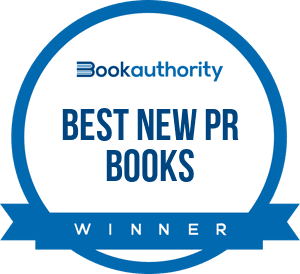
I got into PR about six years ago. Since then the PR industry has continuously being disrupted.
That's probably happening to more or less any industry simply because of how fast technology is changing and how quickly ordinary people are embracing digital and are making decisions differently because of digital.
But I haven't seen this being said so much about the other industries as it has been for PR. Google "disruption of public relations" and you'll find multiple articles every year highlighting how PR needs to be disrupted, is ready to be disrupted or better be disrupted with real action. (And the list goes on.)
Fast forward to 2016 and we find the latest Global Communications Report from the Holmes Report pushing that message again — the scale of change is disrupting the PR industry but is PR really able to adapt to this shifting landscape?
That's a question that's been asked since I got into the industry (and probably long before that) and started reading articles like the ones above. What does this really signify? That I might not even need to dig into the report to understand that PR still hasn't adjusted quickly enough. That there's still a lot of work to be done even though it's been years since the digital revolution has begun.
Nevertheess, it's always good to get some facts so here's what the report is telling us:
The Good News:
- The worldwide PR agency business will grow from its current estimated size of $14 billion to $19.3 billion over the next five years.
- To accommodate this growth, agency leaders anticipate their headcount will increase over the same period by about 26%.
- Written communications is the skill ranked most important by client and agency respondents.
- The demand for content and technology adoption is driving growth. Industry leaders, both in agencies and in-house, believe future growth will be driven by content creation (81%) and social media (75%) as well as more traditional activities such as brand reputation (70%), followed by measurement and evaluation.
- Agencies agree that earned media will still be the dominant revenue driver at 36% but all of the other media categories will grow as well — owned to 24.6%, shared to 24.2% and paid to 12.9%.
- All survey respondents agree that in five years their jobs will become more complex, challenging, and strategic.
The Bad News:
- Client budgets are increasing slowly.
- Finding talent it the biggest challenge for the PR industry. PR is not good at sourcing and retaining talent from outside its ranks with salary levels being a major obstacle or because of the inability of PR to look outside of other traditional PR firms for talent.
- Traditional expertise still tops the list of skills communications departments and PR firms view as key to success over the next five years. (I get the writing, it's key, but don't you want to evolve?)
- PR professionals today lack curiosity, creativity, and critical thinking.
- Only 26% anticipate ‘an extreme amount of change’ and just 4% expect to see ‘complete change' in business models to accommodate for growth and the need for new skills to fit the changing client and agency landscapes.
- And so there's also no indication of budgets increasing to be fit for that change.
- Clients are more unhappy with a few things such as the availability of competent management, tightening corporate budgets, the lack of relevant skills and a shortage of quantifiable measurement techniques.
- Current measurement models are still alarmingly focused on measures of output—such as total reach or total impressions—rather than on business outcomes. Agency and client-side respondents rated total reach as the most common form of measurement (68%), followed by impressions (65%) and content analysis (64%) with less emphasis on brand perception (47%) or attempts to measure return on investment (41%) and 30% still using advertising value equivalency!!!
- Social media measurement is equally unsophisticated. The most common metric reported by agency and client-side respondents is a simple count of followers (78%), followed by reach (77%) and interactions such as likes or comments (76%). By comparison, relatively few are tracking sentiment (62%); social listening, such as real-time monitoring on conversations (47%); or changes in opinion or action (36%).
This is how Fred Cook, Director of the USC Center for Public Relations summarises the findings:
“Overall, we are sensing a continued optimism about the direction the industry is headed, which is good news for people entering the field. But questions remain about the industry’s ability to attract the right talent, adapt to new technologies and increase the level of investment required to capitalize on these opportunities.”
PR and Disruption
You see? We are back at where we started. Ready for disruption, but not really able to.
I know I've been focusing on the negative, there are positive things too.
I love how content is so big and how owned is growing. This is totally in line with the Inbound PR concept that I've been preaching and that fits perfectly with all PESO media types. A concept which, by the way, if followed, would solve for many of the above challenges.
Especially for the two most alarming ones: measurement and being stuck with the old skills.
The lack of proper measurement and skills highlights the need to understand data and to be able to make informed decisions based on it.
I'm often surprised at how agencies fail to analyse how their client activities are performing on a weekly, monthly or quarterly basis and make decisions about what to do for e.g. the next quarter based on these findings of what works and what doesn't.
The simplest example here is the content plan (since content is becoming so big for PR). Don't go blind and just create any content. Test it, analyse after three months what the most popular and traffic-driving as well as the best converting blog posts were or the ones that helped sales. Then choose what to double down on for the next three months accordingly. Don't just write something you think should work because it fits the topic.
It's obvious that change is needed. A whole report is telling us that. But things are happening too slow.
It really is time to take action, please!
How can we speed up change?







